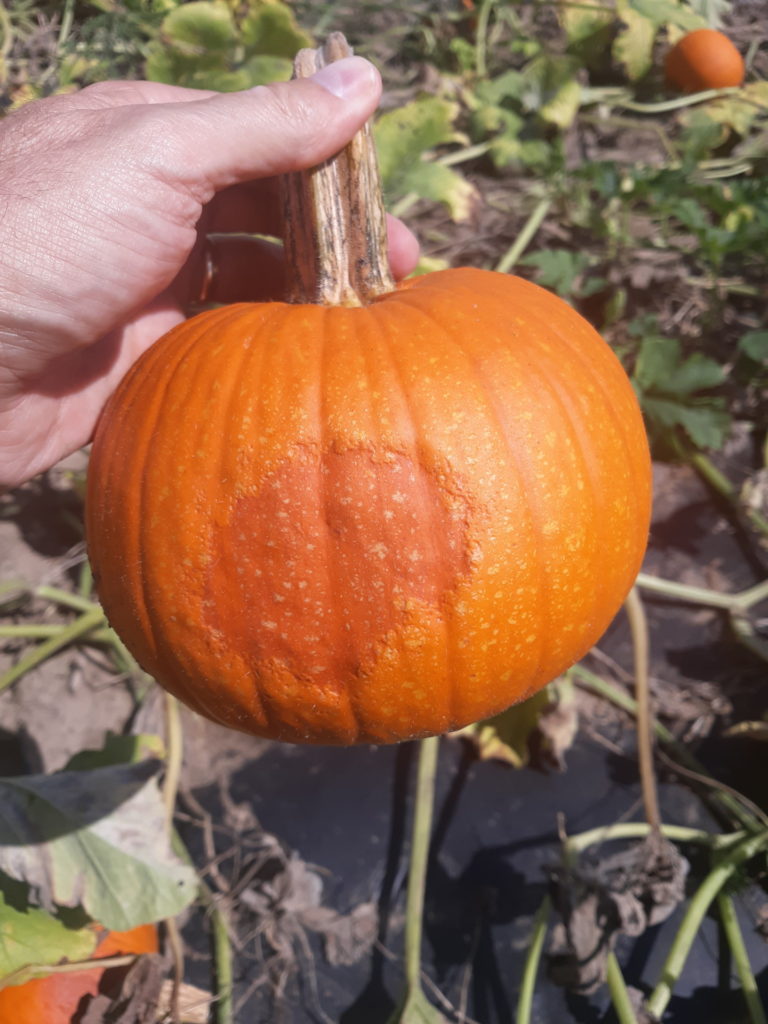Pumpkin and winter squash should be harvested fully mature to reach their optimal quality and fulfill their potential shelf life. Characters indicating fruit maturity include loss of rind surface gloss, ground spot yellowing, and hardening of the skin to the level that it is resistant to puncture with a thumbnail. Except for some striped varieties, mature fruit should have a solid external color. If mature fruit is left attached to the vines, it increases the chance of disease infection and insect damage on stems and fruit. For example, Plectosporium blight causes cosmetic damage to handles, and bacterial spot reduces the quality and longevity of fruit. In addition, if diseases such as powdery mildew and downy mildew cause significant loss of foliage, fruit left in the fields are likely to suffer sunscald (Figure 1) and low-quality handles as explained in this article https://vegcropshotline.org//article/powdery-mildew-of-cucurbits/.
In some situations, like pick-your-own, where mature fruit has to be held in the field, scout carefully to manage diseases and insects to maintain healthy vines and protect fruit. Recommended fungicides and insecticides can be found in the Midwest Vegetable Production Guide for Commercial Growers. If fruit has to be harvested prematurely because of plant decline, these fruits won’t store as well as mature fruit. The best practice is to harvest the fruit as soon as they are fully mature and then store it under proper conditions.
After harvest, pumpkins may benefit from curing, especially when the fruit shows non-hardened skin and surface damage. Curing is conducted under temperatures between 80°F and 85°F in a shaded area for about 10 days. Studies have shown that curing heals wounds, hardens the rind, enhances fruit color and increases sugar content. It should be noted that curing is detrimental to acorn squash; it accelerates skin color change, deteriorates fruit texture and taste, and stimulates fruit decay.
Pumpkins and winter squash are best stored at temperatures between 50°F and 55°F and relative humidity between 50% and 75%. With higher storage temperatures, excessive loss of weight, color, and eating qualities might be experienced. When temperatures are above 55°F, the surface of acorn squash turns yellow, and the flesh becomes stringy. Under the optimal storage conditions, acorn squash can be stored for 5 to 8 weeks, pumpkins and butternut squash for 2 to 3 months, and hubbard squash for 5 to 6 months. Both pumpkins and winter squash are sensitive to ethylene. They should not be stored near apples, ripening tomatoes, or cantaloupes. When the temperature is below 50°F, fruit might develop chilling injury (Figure 2). Pumpkins, butternut, and acorn squash may survive one or two cold nights in the field; however, a frost might lead to fruit rot. If fruit is displayed in the field or a farm stand, it should be protected if frost is anticipated.

